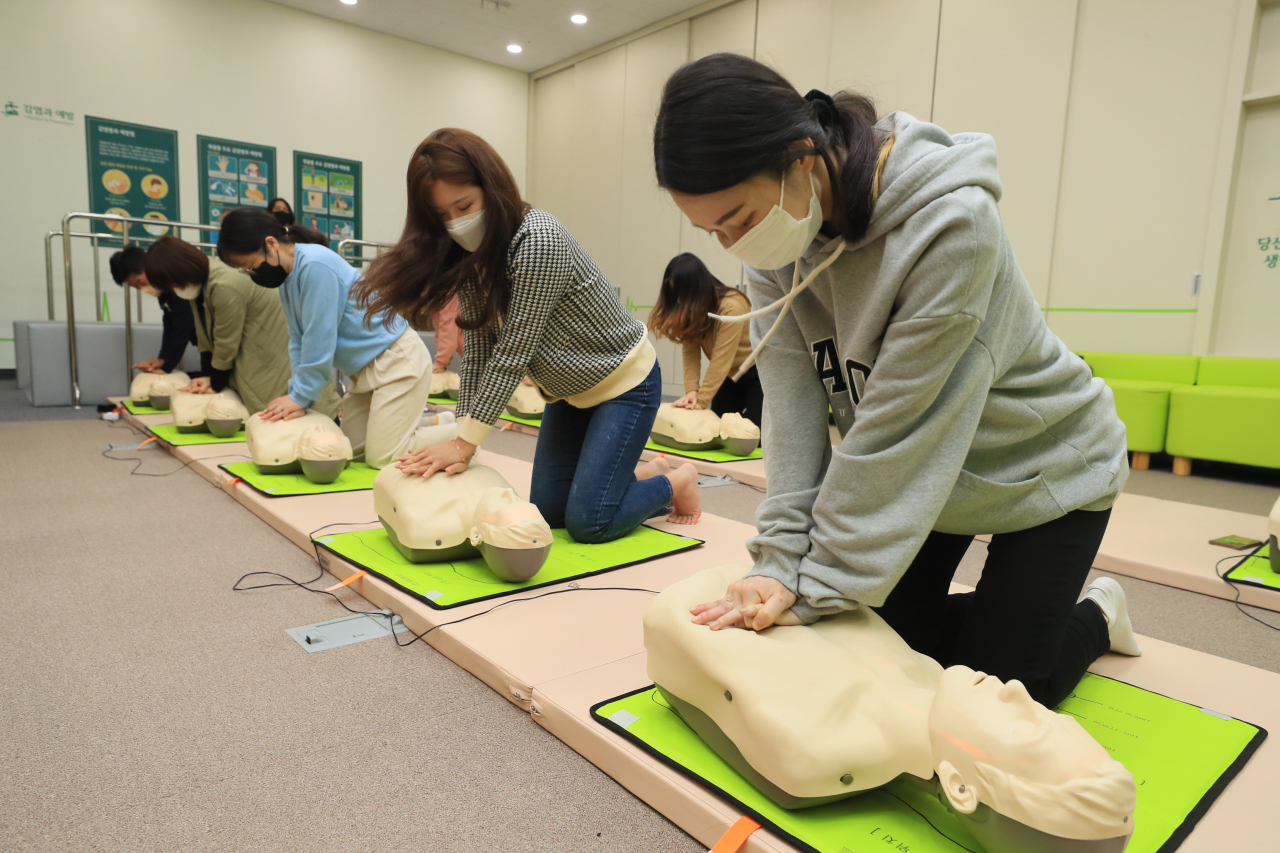
Choi In-ae, an office worker who works for a pharmaceutical firm, has attended emergency response training sessions annually. It was a compulsory program required by her company, which she often just got it over with.
After learning about the desperate call out for those who know how to perform CPR on victims at the scene of the Itaewon crowd crush, she now thinks differently about first air training.
“I received emergency response training such as CPR and the Heimlich maneuver from my company. But it’s difficult to respond promptly to an emergency with just one training program,” she said. “I plan to take the program seriously from now on and practice them repeatedly.”
After over 150 people died in a swamped Itaewon street on Saturday night in the country’s worst crowd disaster in history, more South Koreans show interest in learning first aid skills.
From locations where such training programs are offered to tutorial videos showing the steps to take, social networking platforms are filled with information on CPR.
In the case of cardiac arrest, which was the main cause of deaths for the victims of the Itaewon disaster, the golden time is four to six minutes. In the meantime, rapid first aid such as CPR and an automatic defibrillator has a great impact on the patient's chances of survival.
According to a 2019 report by the National Statistical Office, the survival rate when CPR was performed was 15.0 percent, nearly 2.4 times higher than that of 6.2 percent without it.
The central and local governments are taking actions in response to the calls that proper CPR training could have saved more lives in emergency situations like the Itaewon disaster.
On Tuesday, the government decided to strengthen safety education for elementary, middle and high schools with a focus on practical training.
“We will add new safety education such as guidelines on how to respond to incidents involving multiple clustered places, personal mobility devices, and animal biting and consult with relevant ministries so that first aid education including CPR can be operated based on practice,” the ministry said.





